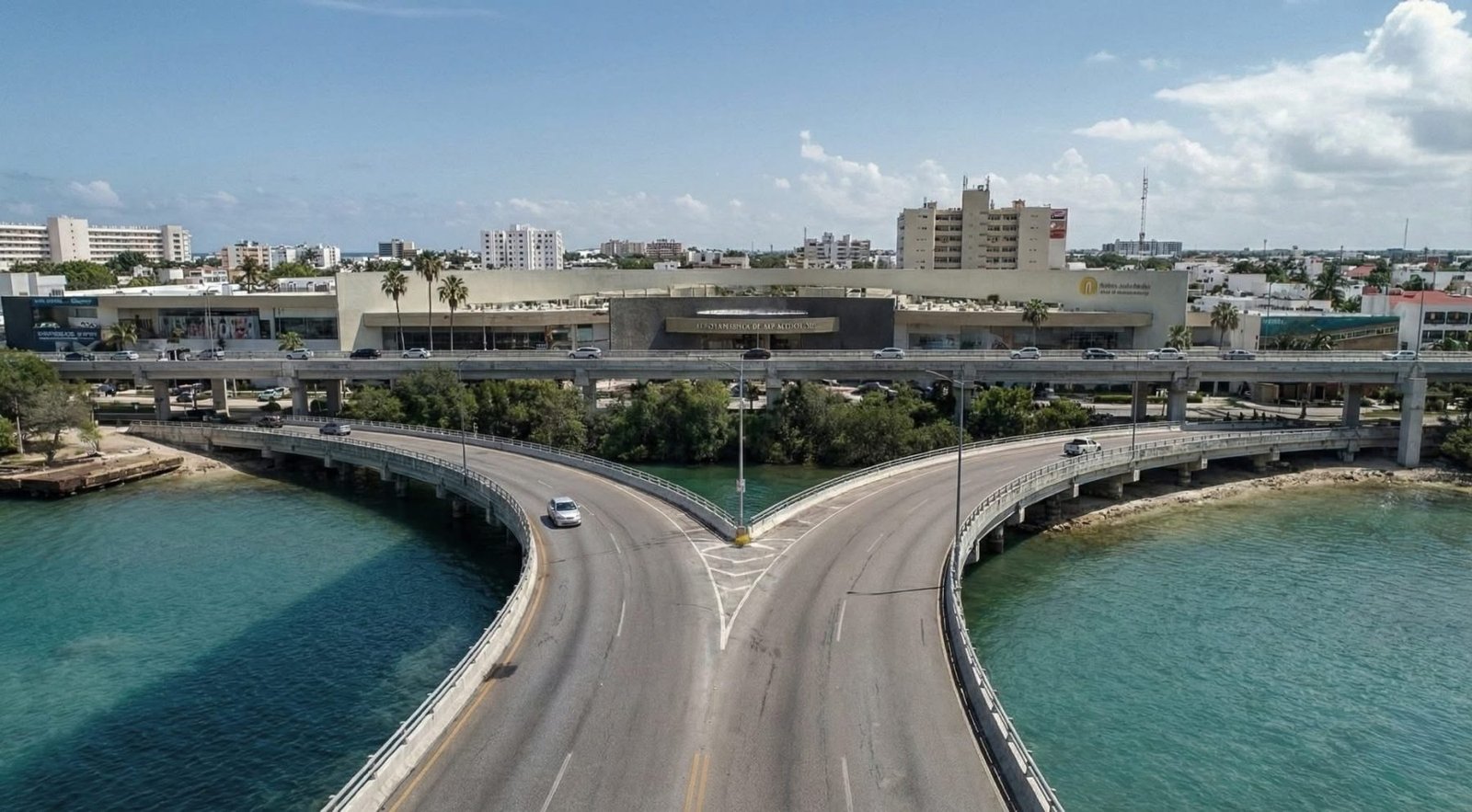Cancún, Mexico — The Nichupté Bridge, one of the most anticipated infrastructure projects in Cancún over the last two decades, has entered its final construction phase, according to the head of the SICT in Quintana Roo, Guido Mendiburu Solís. He confirmed that the project will be delivered on December 30, 2025, with current progress at 90.4% over its 8.8-kilometer length.
The infrastructure will connect the Kabah road distributor, where Bonampak, Kabah, and Tulum avenues converge, with kilometer 13 of the Hotel Zone, at the level of Plaza Kukulkán.
This connection has long been identified as a necessity by specialists, business owners, and authorities since the 2000s, when saturation on Kukulkán Avenue began showing the first signs of traffic collapse during high seasons.
Over the years, various state and federal governments proposed alternatives—such as a vehicular bridge, an elevated viaduct, or even an exclusive public transportation system—but the projects did not advance due to lack of budget, changes in administrations, or environmental conflicts.
It was not until the term of former President Andrés Manuel López Obrador that the project finally received federal resources and entered execution alongside other strategic works in Cancún, such as the airport distributor, the modernization of Colosio Boulevard, and the expansion of Chac Mool Avenue.
Mendiburu detailed that current work is concentrated in the final phase: placement of slabs, pavement, expansion joints, parapets, curbs, lighting, signage, drainage, and the ITS system, which will allow intelligent monitoring of vehicular flow.
In addition to its functional relevance, the bridge was designed to meet environmental protection criteria. Its piled structure, with a free height between 5 and 10 meters, allows avoidance of direct impact on the mangrove and the Nichupté lagoon system, a historically vulnerable area to urban projects.
The project will have one lane per direction, a reversible lane, a bike path, and an operational speed of 80 km/h. With an investment exceeding 8,600 million pesos, the federal government estimates it will generate more than 51,000 direct and indirect jobs.
He added that when the Nichupté Bridge enters operation, it will significantly reduce pressure on Kukulkán Avenue and represent the most ambitious solution that Cancún has achieved in terms of mobility since the creation of Colosio Boulevard in the 1990s for a city that grew from 30,000 inhabitants in 1974 to over one million today. Its inauguration will mark a long-awaited milestone in the history of its urban growth.
Discover more from Riviera Maya News & Events
Subscribe to get the latest posts sent to your email.
